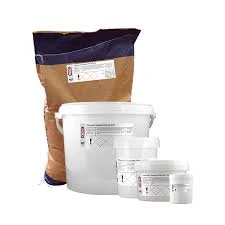
Current Market Trends and Factors Influencing Dimethyl Disulfide Price Fluctuations at a Global Scale
The Price Dynamics of Dimethyl Disulfide An Overview
Dimethyl disulfide (DMDS), a colorless and flammable liquid with a distinctive odor, is an important chemical compound widely used across various industries, including agriculture, petrochemical production, and even food processing. As a sulfur-containing compound, DMDS serves significant roles, particularly as a methylating agent, a solvent, and in the synthesis of other chemicals. Understanding the price dynamics of DMDS is crucial for stakeholders across these sectors.
Factors Influencing DMDS Prices
The pricing of dimethyl disulfide is influenced by several interrelated factors. The primary driver is supply and demand dynamics. Industrial demand for DMDS fluctuates based on its applications. For example, in agriculture, DMDS is frequently employed as a soil fumigant to eliminate pests and diseases that affect crops. The agricultural sector's seasonal demands can lead to price spikes during peak usage periods.
Conversely, the supply side is impacted by the raw materials needed for DMDS production. This compound can be synthesized via different methods, most commonly from methyl mercaptan and sulfur. Fluctuations in the availability and price of these precursors, often driven by changes in crude oil prices or geopolitical events impacting sulfur availability, can significantly affect DMDS prices.
Market Trends and Predictions
In recent years, there has been a notable trend in the market for DMDS, driven by the increasing emphasis on sustainable agricultural practices. As regulators globally push for safer and more environmentally friendly agrochemicals, DMDS has gained traction due to its relatively lower toxicity compared to traditional fumigants. Consequently, this demand surge places upward pressure on prices.
dimethyl disulfide price

Furthermore, the overall economic landscape plays a significant role in DMDS pricing. Global economic fluctuations, trade policies, and tariffs can lead to changes in market dynamics. For instance, trade restrictions can limit the import/export of key raw materials, thereby affecting production costs and, ultimately, the price of DMDS.
Regional Considerations
Geographically, DMDS prices can vary significantly depending on the region. In North America and Europe, where stringent regulations regarding chemical use are in place, higher production costs and regulatory compliance may lead to elevated prices. In contrast, in regions with developing economies, such as parts of Asia, the production costs may be lower, resulting in more competitive pricing.
The logistics of transportation also play a crucial role in regional pricing disparities. Regions with established chemical infrastructure are typically able to distribute DMDS more efficiently, thereby reducing costs. In contrast, remote areas may face higher transportation costs, which can increase retail prices.
Conclusion
The price of dimethyl disulfide is influenced by a complex interplay of supply and demand, raw material costs, regulatory frameworks, and regional market conditions. As industry trends continue to evolve, particularly in terms of sustainability and safety regulations, stakeholders in the DMDS market must stay vigilant and adaptable to changing price dynamics. For businesses relying on DMDS, understanding these factors is essential not only for cost management but also for strategic planning and positioning in an increasingly competitive market landscape. As the demand for environmentally friendly solutions grows, the outlook for dimethyl disulfide pricing will remain a critical consideration for both producers and consumers.
-
Industrial Chemicals: Quality & Purity for Every IndustryNewsAug.28,2025
-
Nitrile Rubber Honoring Strict Production StandardsNewsAug.22,2025
-
Aspartame Ingredients Honoring Food Safety ValuesNewsAug.22,2025
-
Fertilizer for Balanced Plant NutritionNewsAug.22,2025
-
Cyanide Gold Processing with High Purity AdditivesNewsAug.22,2025
-
Formic Acid in Textile Dyeing ApplicationsNewsAug.22,2025
-
Aluminum Hydroxide Gel in Skincare ProductsNewsAug.22,2025
Hebei Tenger Chemical Technology Co., Ltd. focuses on the chemical industry and is committed to the export service of chemical raw materials.
-

view more DiethanolisopropanolamineIn the ever-growing field of chemical solutions, diethanolisopropanolamine (DEIPA) stands out as a versatile and important compound. Due to its unique chemical structure and properties, DEIPA is of interest to various industries including construction, personal care, and agriculture. -

view more TriisopropanolamineTriisopropanolamine (TIPA) alkanol amine substance, is a kind of alcohol amine compound with amino and alcohol hydroxyl, and because of its molecules contains both amino and hydroxyl. -

view more Tetramethyl Thiuram DisulfideTetramethyl thiuram disulfide, also known as TMTD, is a white to light-yellow powder with a distinct sulfur-like odor. It is soluble in organic solvents such as benzene, acetone, and ethyl acetate, making it highly versatile for use in different formulations. TMTD is known for its excellent vulcanization acceleration properties, which makes it a key ingredient in the production of rubber products. Additionally, it acts as an effective fungicide and bactericide, making it valuable in agricultural applications. Its high purity and stability ensure consistent performance, making it a preferred choice for manufacturers across various industries.





